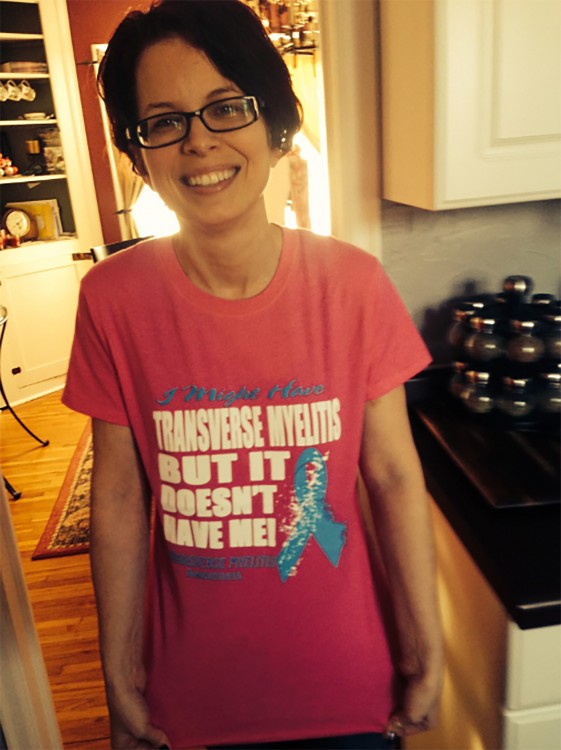My symptoms kicked off strangely, but fittingly around April Fool’s Day 2014 after a shower. I’d dried off, but my legs still felt wet in patches. Scrubbing at them with a towel didn’t help. When sensations waxed and waned over the next several weeks, I presumed a cervical injury had blown another disc.
Minor inexplicable bodily issues usually dissipate, I told myself. Until my fingers and toes started tingling. Vertigo hit, lasting seven months. My right leg spasmed, gripping me from the hip down merely from stirring in bed. It didn’t hurt so much as it was a rigor to withstand.
I lost my balance, my gait reduced to stumbling atop the planks of a listing ship. Co-workers supported me as I reeled along. A fitting analogy describing optical issues became eyeball murder party, reservations for one. Indescribable fatigue descended. I wished I could lie down — when I was lying down! I shook, and forgot information. My mouth burned, my throat iced and stole my breath.
I endured ride after ride in the MRI machine, countless blood tests, medication side effects, a terrifying lumbar puncture, bizarre-seeming procedures and physical therapy. Four months later, upon hearing the name of the culprit, I was foolish enough to feel lucky.
As of this writing, I have reinvented myself and my career. My relationship has proven to be unbelievably resilient. I am beyond proud of my superhero kids.

Before I could get to this state, I had to lose almost everything.
Categorized by the National Organization for Rare Disorders, transverse myelitis (TM) affects all ages, races and both sexes, and is defined as “… a rare inflammatory disease causing injury to the spinal cord with varying degrees of weakness, sensory alterations, and autonomic dysfunction…” Approximately 75 percent of cases are idiopathic. Symptoms mirror multiple sclerosis (MS).
The National Institute of Neurological Disorders and Stroke reports “…about one-third of people affected with transverse myelitis experience good or full recovery from their symptoms; they regain the ability to walk normally and experience minimal urinary or bowel effects and paresthesias. Another one-third experience only fair recovery and are left with significant deficits such as spastic gait, sensory dysfunction, and prominent urinary urgency or incontinence. The remaining one-third experience no recovery at all…”
There is no cure.
My body attacked the myelin sheathing on my spine. Electrical signals traveling through that area are interrupted, eliciting symptoms striking at the height of the lesion and below. Once, my foot deadened within seconds, as if it had been asleep for 20 minutes! Three neurologists can’t tell me why my tongue burns as if zapped on a 9-volt battery, and I spark like a blown fuse. So every six months I hop in the scanning tube for funsies.
I have become uncomfortably numb.
I consider myself fortunate, having contracted subacute transverse myelitis. Acute TM can cause paralysis and even death.
An attempt to dig up research dollars yielded zero results because only about 1,400 Americans are diagnosed each year.
We lean heavily on support group members.
The Transverse Myelitis Folks (Blue Crew), a Facebook group (and extension of my family) run by Kevin Weilacher, provides encouragement, credible resources and life-changing positivity. Weilacher advises, “never take life for granted, because your life can change in an instant.”
Member Justin Hephner’s ability to walk again is attributed to his 40 years of martial arts study, arguing that the healthier a person is prior to onset, the greater their potential for complete recovery.
Liz Gardner, who has since has lost the use of her hands, had never heard of transverse myelitis, even though she’d worked in health care.
Neither had my mom, who has been in the field for nearly 40 years.
We love our community’s TM children fiercely, those whose mobility has been affected. Infants who can’t walk, toddlers breathing through a vent. When our kids make strides, tears wet our cheeks.
People call me courageous. I’m just refusing to be defined.
All I can do is meet each day head on, no matter what it brings — a relapse, a fresh lesion stealing another function.
Or my life.
Because of my new situation, I alternately run on 100-proof anger and determination, grasping hope so I don’t drown in sadness. I hate the new physical me, while also recognizing what I’ve learned from the experience. I am kinder, less-panicky and more accepting. TM made me vulnerable. I had no choice but to reach out. It was accept me or don’t.
My children were furious and scared, and we all yearned for a diagnosis while dreading to know the truth. Out of frustration, everyone cried and screamed obscenities during family meetings. But we have surpassed those times. Now as my fiancé and I prepare to marry, our little clan knits closer together using the miles of road we have traversed.
I am at last good enough. Exactly as I am. Oddly thanks to transverse myelitis.
Follow this journey on Hilary’s website.
The Mighty is asking the following: Were you diagnosed with your disease, disability and/or mental illness as an adult? Tell us about the moment you finally got your diagnosis. Check out our Submit a Story page for more about our submission guidelines.

